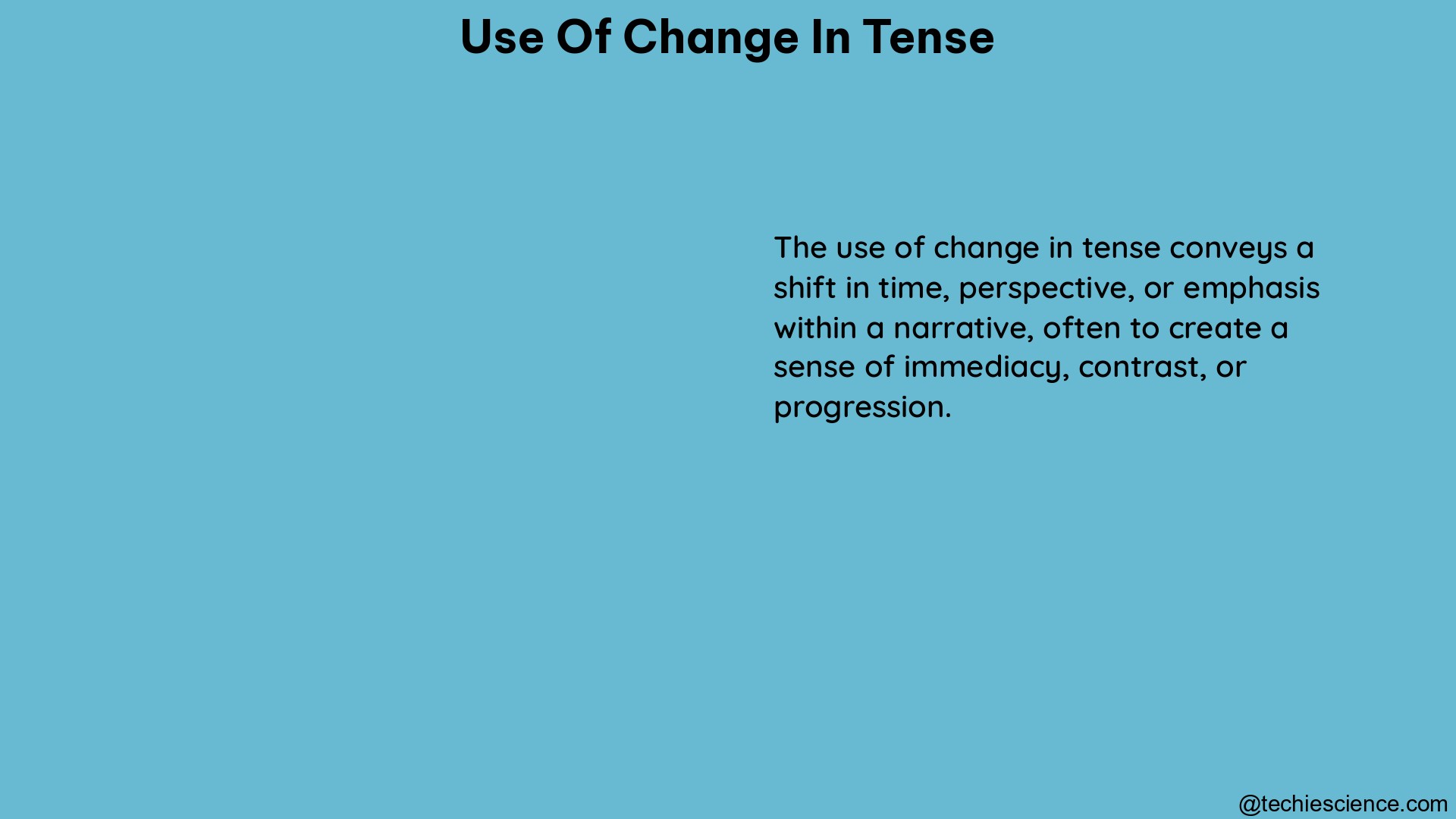The use of changing tenses in English grammar is a crucial aspect of effective writing. It helps to convey different time frames, create a more engaging narrative, and guide the reader through the flow of events. This comprehensive guide will delve into the intricacies of tense shifts, providing you with a deep understanding of when to change tenses, when to maintain consistency, and the best practices for seamless transitions.
When to Change Tense
Changing tense is necessary when the time frame of the action changes from past to present or future. This shift in tense helps to indicate the change in time frame and maintain clarity in the narrative.
Example:
– Past tense: “I was terrified.”
– Present tense: “I think my feelings may have been influenced by stereotypes of the Old South.” (The tense change is acceptable because the writer is thinking in the present time).
When Not to Change Tense

Avoid changing tense if the actions or states all occur within the same time frame. Consistency in tense is essential to avoid confusion and maintain a smooth flow in your writing.
Example:
– Incorrect: “I climbed out of the car, walked through the door, and prepared to meet ‘the parents,’ but instead a large, honey-colored dog runs to meet me at the door.”
– Correct: “I climbed out of the car, walked through the door, and prepared to meet ‘the parents,’ but instead a large, honey-colored dog ran to meet me at the door.” (Maintaining past tense for all actions).
General Guidelines for Tense Shifts
- Maintain one tense for the main discourse: Indicate changes in time frame by shifting tense relative to the primary tense, which is usually simple past or simple present.
- Avoid shifting tense if the time frame is the same: Do not shift from one tense to another if the time frame for each action or state is the same.
- Shift tense to indicate a change in time frame: Do shift tense to signal a change in time frame from one action or state to another.
Successful Examples of Tense Changes
- Pittsburgh Public Theater production of The Pirates of Penzance: The writer shifts from past tense to the universal present to make the reader feel like an observer, and then back to past tense for comments about the play.
- Memoir Writing II class: The writer shifts from past tense to present tense in the final scene to create immediacy and make the moment more breathtaking.
Tips for Changing Tense
- Use tense shifts sparingly: Avoid overusing tense changes, as it can jarr the reader and disrupt the flow of the narrative.
- Understand the purpose: Know why you’re changing tense, such as to slow the action, create intimacy, or show a character’s memory or fantasy.
- Manage your transitions: Use new chapters, sections, or scenes to ease the reader into the tense change and maintain a seamless transition.
Tense Shift Scenarios
Let’s explore some common scenarios where tense shifts are necessary or should be avoided:
Scenario 1: Shifting from Past to Present Tense
Example:
– Past tense: “Yesterday, I went to the park and played on the swings.”
– Present tense: “Today, I am enjoying the sunshine and the fresh air.”
In this example, the shift from past tense to present tense is appropriate as it indicates a change in the time frame of the actions.
Scenario 2: Maintaining Consistent Tense
Example:
– Incorrect: “I walked to the store, buy a few items, and then return home.”
– Correct: “I walked to the store, bought a few items, and then returned home.”
In the incorrect example, the tense shifts from past to present and back to past, which can be confusing for the reader. The correct version maintains the past tense throughout, ensuring consistency.
Scenario 3: Shifting Tense for Emphasis or Perspective
Example:
– Past tense: “I had been studying for the exam all week, but I still felt unprepared.”
– Present tense: “As I sit in the exam room, my heart races with anxiety.”
In this example, the shift from past tense to present tense creates a sense of immediacy and emphasizes the character’s current emotional state, allowing the reader to experience the moment more vividly.
Conclusion
Mastering the art of tense shifts in English writing is a crucial skill that can elevate your writing and engage your readers. By understanding when to change tenses, when to maintain consistency, and the best practices for seamless transitions, you can create a more polished and compelling narrative. Remember to use tense shifts sparingly, with a clear purpose in mind, and to manage your transitions effectively. With these guidelines in hand, you’ll be well on your way to becoming a tense-shifting pro.
Reference:
- https://www.iup.edu/writingcenter/writing-resources/grammar/tense-shifting.html
- https://owl.purdue.edu/owl/general_writing/grammar/verb_tenses/verb_tense_consistency.html
- https://www.summitlearning.org/docs/40003037
Hey! I am Arpita Bose Roy. My qualifications are M.A. in English with B. Ed. in both general education and special education. I have 2 years of experience as a “language analyst” at IIT Kharagpur and 4 years of experience as an “Academic Content Developer” at IIT Kharagpur. Currently, I am working as an academic writer at Lambdageeks.